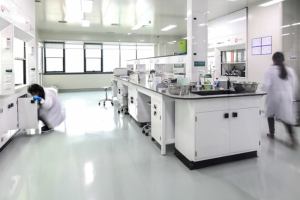Investment pays off in future savings

Norton Women’s & Children’s Hospital was one of nine facilities in the Norton Healthcare system to undergo major infrastructure upgrades in 2022 that are reaping benefits today.
Image courtesy of Norton Women’s & Children’s Hospital
Norton Healthcare, Louisville, Ky., operates more than 430 locations throughout Kentucky and southern Indiana. With roots dating back to 1886, the health system’s facilities are of varying ages and infrastructure needs, presenting challenges for its maintenance teams.
In 2022, faced with a combination of aging equipment and rising energy and maintenance costs, Norton Healthcare sought to increase energy savings, reduce its carbon footprint and operational costs, and enhance indoor air quality and patient comfort. But not only that, the system needed to ensure that any investments would perform as expected.
“We operate 24/7/365; the lights are always on, energy is always being used and equipment ages at an accelerated rate,” says David Boome, recently retired system director for design and construction and facility planner at Norton Healthcare. “Maintaining the proper environment for our patients is our goal, and we want to do that as efficiently and cost effectively as possible.”
Working with its long-time equipment, controls and services provider, Trane, the health care system set out to address infrastructure issues, beginning with an energy assessment to define the project scope. The team from Trane Connected Building Solutions spent hours walking the facilities, talking with maintenance crews, compiling a list of efficiency improvement opportunities and developing a comprehensive energy saving plan.
After analyzing those findings, Norton Healthcare and Trane moved forward with a four-year, multiphase energy initiative covering nine facilities within the system, comprising approximately 2.8 million square feet. Upgrades included chiller plant integration and modernizations; air handler, variable air volume unit and lighting replacements; building automation system upgrades; and building envelope improvements.
The team integrated a new combined cycle central plant with the existing plant at Norton Audubon Hospital in Louisville. The system combines thermal storage with gas chillers to provide reliable, cost-effective cooling and heating. The ice storage system provides 4,500 ton-hours of cooling capacity for the building and includes two Trane air-cooled Stealth helical rotary chillers and 18 Calmac Ice Bank energy storage tanks.
To save on energy, the chillers generate ice at night when loads are lowest, taking advantage of lower-cost, off-peak electricity rates. The chillers are turned off during the day, and the stored ice is used for cooling, significantly reducing energy use and demand costs.
Two 400-ton natural gas-fired chillers provide chilled water for the facility, offsetting electricity demand and consumption with a lower-cost fuel source. The gas chillers’ heat recovery option also produces hot water for the facility 24/7.
“We have been working with Trane on alternative ideas to reduce our demand load,” Boome says. “Trane’s engineering knowledge and expertise, coupled with their familiarity of our systems, are helping to make it happen.”
The Trane Stealth air-cooled chillers at Norton Audubon Hospital deliver the highest combination of part-load and full-load efficiencies. With the lowest published sound levels, the Stealth chillers provide optimal performance without disrupting sensitive areas.
At Norton Women’s & Children’s Hospital, also based in Louisville, a more conventional chiller plant with cooling towers and three 1,000-ton, high-efficiency Trane CenTraVac centrifugal chillers proved to be the best option for the high demand levels. Aging air handlers were also upgraded with modular units.
To track performance across its facilities, Norton Healthcare implemented the Trane Tracer Ensemble building management system, which provides an enterprise view of the entire system to help increase productivity and enable equipment monitoring and troubleshooting. Facilities managers can access performance measurements for HVAC, lighting and other systems using a tablet or smartphone via a web-enabled user interface. They also can use Tracer Ensemble to establish setpoints, perform scheduling, optimize operations, respond to trouble calls and manage alarms.
With visibility to what is happening in their buildings, facilities managers can fine-tune operations to drive down energy use and costs.




